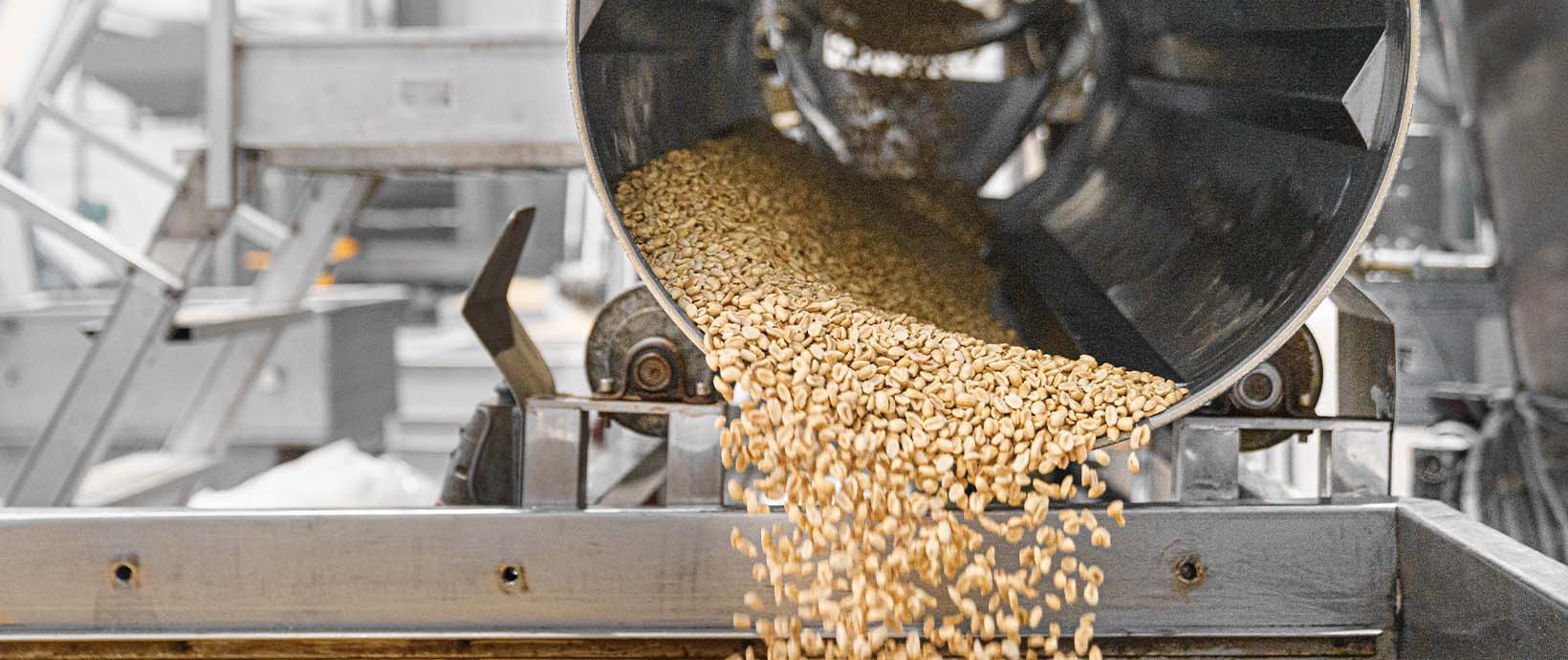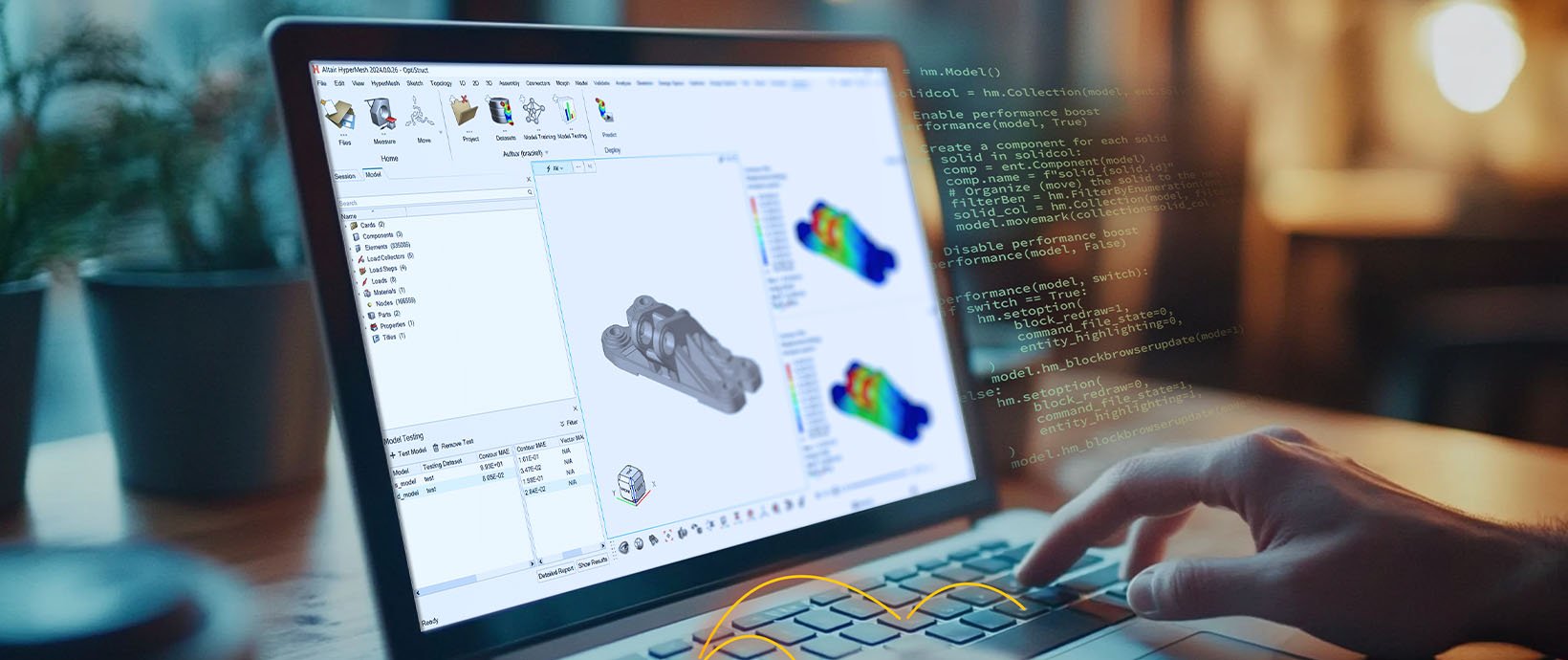Expert Q&A: Marinos Stylianou on Altair’s GFRP Simulation and Sustainability Leadership
When we think about sustainability, concrete and rebar might not be the first two things that come to mind – but you might be surprised at the scale of their environmental impact. According to the World Economic Forum, concrete is responsible for 9% of global industrial water withdrawal. Moreover, 75% of concrete production’s water demand is expected to occur in regions facing water stress by 2050. And that water usually needs to be fresh water, since salt water can degrade the steel rebar typically found within concrete.
Enter glass fiber reinforced polymer (GFRP), a next-generation alternative to steel rebar. The use of GFRP offers major potential sustainability benefits. First, since GFRP doesn’t rust, concrete becomes more durable. This means concrete structures require less maintenance over their life span, reducing maintenance-related carbon dioxide (CO2) emissions. Second, since GFRP doesn’t rust, it paves the way for concrete made with non-potable salt water rather than fresh water. This is vital in arid regions where fresh water is scarce.
To discuss all things GFRP and Altair's participation in the recent GFRP Rebar Expo hosted by the Saudi Arabian Ministry of Energy, we talked with Altair architecture, engineering, and construction (AEC) expert Dr. Marinos Stylianou.
Q: Before we dive in, can you explain what GFRP is, what it does, and why it’s important?
Marinos Stylianou: GFRP stands for glass fiber reinforced polymer. What that means is that it's not metallic; it's not something like steel or gold. It’s a kind of plastic made from oil.
GFRP is a steel rebar substitute. Compared to steel, one major advantage of GFRP rebar is that it doesn't rust. It’s not uncommon for rebar to become exposed in concrete structures. For example, when weather or collisions take a toll on a concrete structure, I’m sure everyone has seen exposed rebar at some point. But when steel rebar rusts, concrete structures become vulnerable to failure and may collapse. This is what happened in the 2021 Surfside condominium collapse in Florida.
Another major advantage of GFRP is that it’s more sustainable and requires less power to produce than steel: it emits about 30% less CO2 than steel during the manufacturing process. Since it’s also more durable, it requires less maintenance. Maintenance work involves more materials, machines, and more CO2 to keep buildings in good condition. So, combined with less CO2 to both produce and maintain, you get a great picture of its sustainability.
Lastly, though it’s still in the testing and research phase, research is underway into combining GFRP with concrete made from salt water rather than fresh water. Salt water isn’t used with steel rebar primarily because the salt would corrode the steel – but with GFRP this isn’t a problem. Concrete production uses a staggering amount of the world’s fresh water every year; if we can start conserving it and using salt water instead, that’s a third major sustainability advancement.
On the Altair side, it’s important for us to talk about GFRP because Altair is the first and only company on the market right now to offer reinforced concrete design software that supports the use of GFRP rebar. What we do is unique. If a planner’s goal is to minimize building maintenance and maximize durability, then GFRP is a very appealing alternative to steel rebar. The tools that support this are all within the Altair® HyperWorks® design and simulation platform; they include Altair® S-CONCRETE™, Altair® S-FOUNDATION™, Altair® S-LINE™, and Altair® S-FRAME™.
Q: Where would GFRP have the biggest impact, both geographically and industrially?
MS: Geographically, GFRP will be useful around the world – especially in places where fresh water is scarce and where the climate is hard on concrete and steel. But really, this is a technology that, because it combines durability with sustainability, will be useful everywhere.
Speaking more to that durability side, GFRP is going to be attractive to owners and operators who are looking for their building or structure to last with minimal maintenance. There are plenty of cases where the owners just want it to last a few years until they sell it and then they’re done with it, financially and physically.
In general, GFRP is more expensive than steel, but there are operational advantages included in that upfront cost. For example, if you’re a government department building a new bridge or port, you want to invest in your asset and get the most from that investment. You want that structure to last with as little maintenance as possible. In that case, GFRP makes a lot of sense.
Q: What makes design codes important? What role does GFRP have in current design codes?
MS: Design codes are like holy texts in AEC. Because we in AEC are responsible for building structures, people need to have absolute certainty that these structures are safe and built to agreed-upon standards. If a firm designs a building that fails and people are injured or killed, that company is history. This makes AEC a very conservative industry that is largely hesitant to try new things. Building codes are great because they’re a repository of knowledge built on many, many years of building safety. They’re what ensures buildings are functional and safe.
But because they need to be rigorously tested and approved from many sources and real-world demonstrations, building code revisions take time. On average these types of codes are revised every four or five years, so there’s a lot of inertia that needs to build for the industry to change. For instance, GFRP began to gain popularity around five years ago; code committees were examining it around that time. But you're never really sure when it’s going to be accepted so engineers can use it in their designs. Luckily for us, it was largely accepted about two years ago.
That said, there are still areas in design codes where GFRP isn’t represented well, areas like high rises and seismic zones. Since it’s not in the codes, structural engineers aren’t going to use it just yet, even if they know of it. They don’t want to be the proverbial guinea pigs.
Q: What innovations came from this GFRP Rebar Expo event? Why was our presence and technology noteworthy?
MS: Well, for one, they announced the creation and launch of the first Saudi GFRP building code. These codes are great because, while they’re based on codes from the American Concrete Institute (ACI), they cover new areas like fire resistance, pre-engineered structures, and earthquake resistance. And while these codes are being developed in Saudi Arabia, they’ll soon proliferate into codes around the world.
Our presence was important because, as I mentioned, we currently have the market’s only real reinforced concrete design software with GFRP rebar. The Saudi Arabian team sees us as what they call a “capacity builder” – a vital company whose technology can help them scale production and reach their goals. They see us as a key player in this whole initiative and in global GFRP adoption in general. I think it says a lot about Altair and about people’s perception of us that we were the only technology provider asked to give a keynote speech. Our role will only grow as GFRP use grows, and we look forward to that.
To learn more about GFRP and AEC sustainability, register today for Altair’s upcoming ATCx AEC 2025 event on April 30. ATCx AEC is a dynamic single-day virtual event that will bring together world renowned thought leaders and industry experts to explore the trends, technologies, and opportunities shaping the future of AEC.




